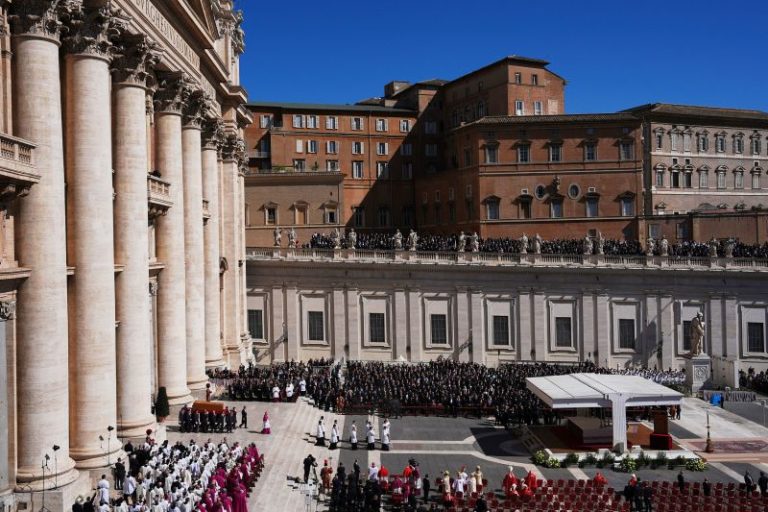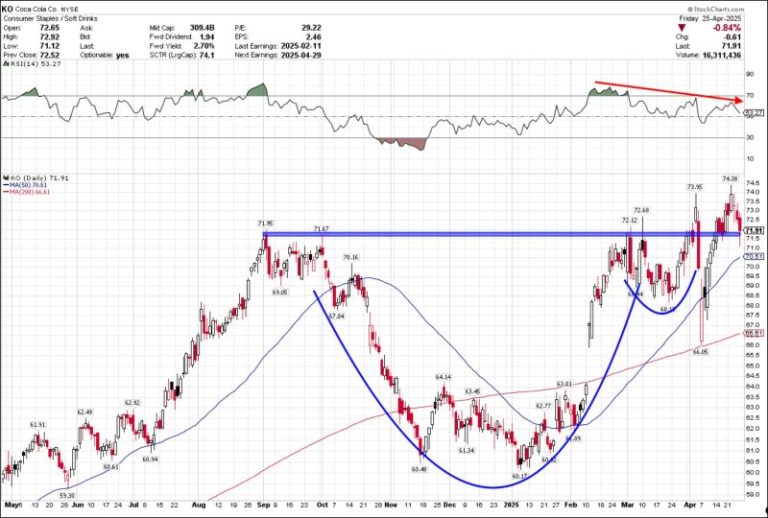The funeral of Pope Francis gave Catholics across the globe the chance to bid farewell to a beloved pontiff – and for world leaders to rub shoulders at a fraught time for international diplomacy.
More than 250,000 people packed into St. Peter’s Square for Saturday’s service, the Vatican said, with members of the public there to mourn along with 55 heads of state.
The day’s most extraordinary meeting came just minutes before the service began. Presidents Donald Trump and Volodymyr Zelensky held what American and Ukrainian officials described as a “productive” discussion in St. Peter’s Basilica, as Francis’ coffin was about to be brought into the square.
So, what was said, who met who, and where did everyone sit?
St. Peter’s Square was split into quarters. Dignitaries, cardinals and bishops were at the front, nearest the basilica, while clergy and the general public were a little further back. The coffin was placed in front of the central altar.
Behind the seated sections, thousands more had packed into the square, standing for more than two hours in the Italian heat.
In the dignitaries’ section, politicians sat in alphabetical order in French, the traditional language of diplomacy.
This meant that Trump – president of “États-Unis d’Amerique” – sat between the presidents of Finland and Estonia, two nations that share borders with Russia, and which will be especially wary of a reduced US military footprint in Europe.
Finland’s President, Alexander Stubb, played a round of golf with Trump in March during an unofficial trip to Florida. Trump said Stubb was a “very good player.” The Finnish presidency said the pair discussed European security, including Ukraine.
During Saturday’s “Sign of Peace,” a rite where members of the congregation shake hands with their neighbors and say “peace be with you,” Trump was seen shaking hands with several world leaders, including French President Emmanuel Macron.
The only dignitaries not sat in alphabetical order were those from Italy – the host nation – and Argentina – Francis’ birthplace. Italian Prime Minister Giorgia Meloni and Argentinian President Javier Milei were sat near the front, with a cluster of other officials.
In what was their first meeting since the explosive Oval Office meeting in February, Trump and Zelensky huddled in close discussion without aides in the ornate surroundings of St. Peter’s Basilica, shortly before the service began.
Both the White House and Ukrainian presidency said the talk lasted around 15 minutes, describing it as positive. Zelensky said the meeting was “symbolic,” with the “potential to become historic, if we achieve joint results.” The crowd in the square broke into applause when Zelensky stepped into the square.
“We discussed a lot one on one. Hoping for results on everything we covered. Protecting lives of our people. Full and unconditional ceasefire. Reliable and lasting peace that will prevent another war from breaking out,” Zelensky wrote on X.
The US president and First Lady Melania Trump left Rome swiftly after the service, meaning the two leaders did not hold further discussions. Zelensky later met with Macron and British Prime Minister Keir Starmer. The four leaders were pictured together in the basilica, after Trump and Zelensky’s one-to-one.
Britain’s Prince William was among a string of royals in Saturday’s crowd. William, next in line to the British throne, sat next to Olaf Scholz, the outgoing chancellor of Germany. Spain’s King Felipe and Queen Letizia, as well as Queen Mary of Denmark, were also in attendance.
Polish President Andrzej Duda and Hungarian Prime Minister Viktor Orban were among several other European leaders in attendance. The South American leaders there included Brazil’s President Luiz Inácio Lula da Silva – who had a close relationship with Francis – and Ecuador’s recently re-elected president Daniel Noboa.
The heads of several supranational institutions were also there, including Tedros Adhanom Ghebreyesus – head of the World Health Organization, from which Trump withdrew the US in January – and UN Secretary-General Antonio Guterres.
Julian Assange also made what was a rare public appearance since his release from Britain’s Belmarsh prison last year. The Wikileaks founder was seen with his wife, Stella, and their two children, at the Vatican.
This post appeared first on cnn.com










